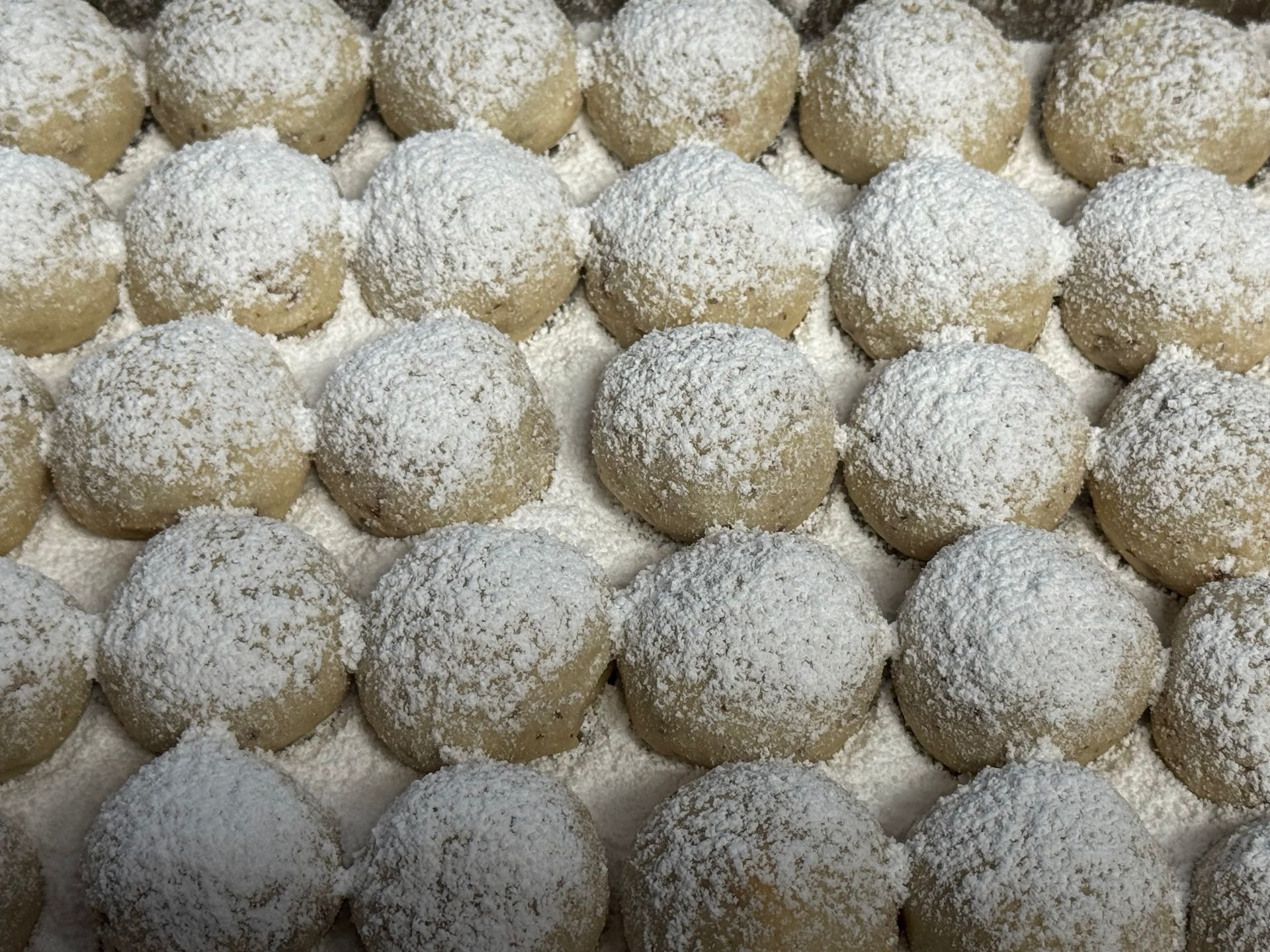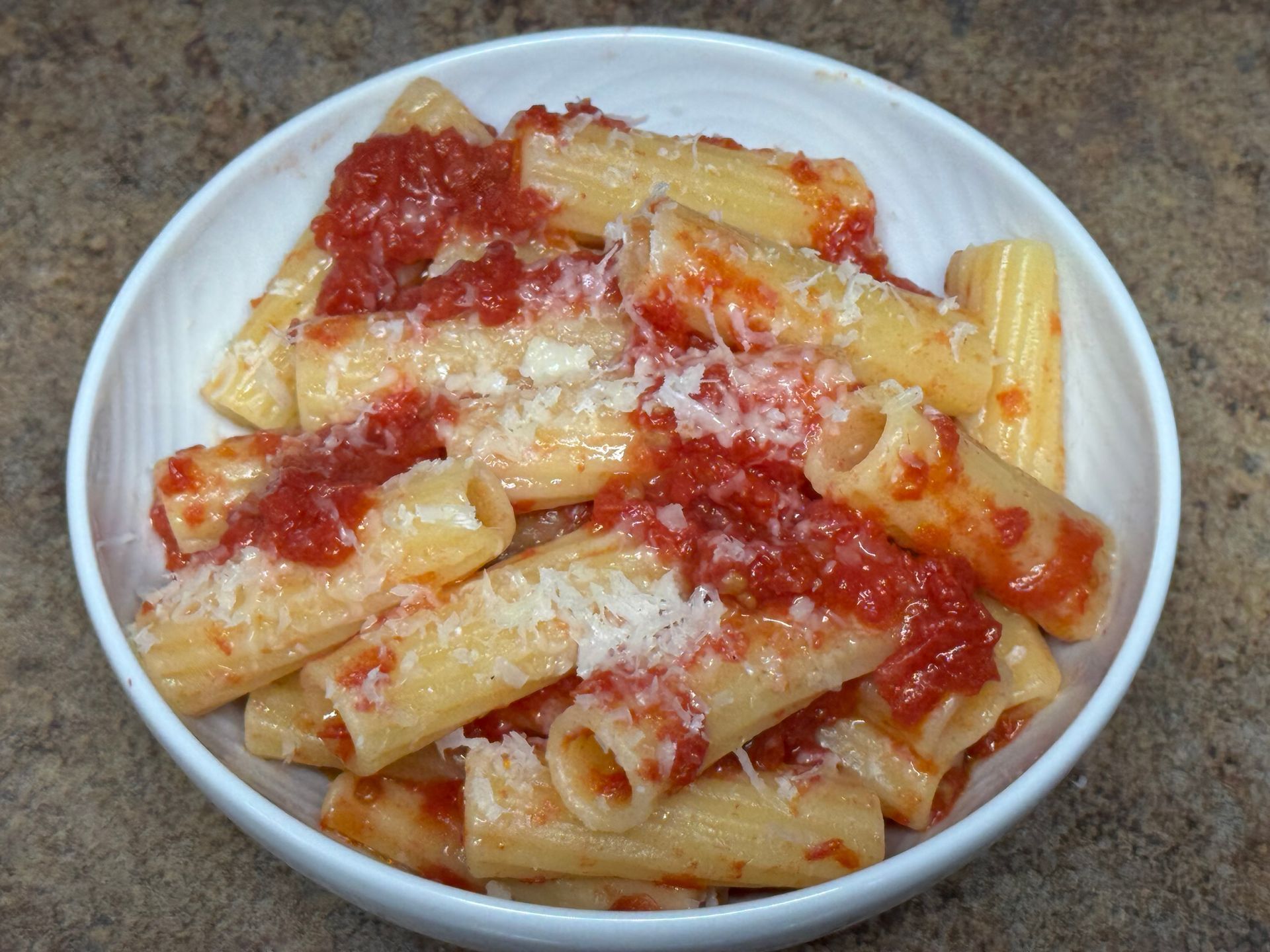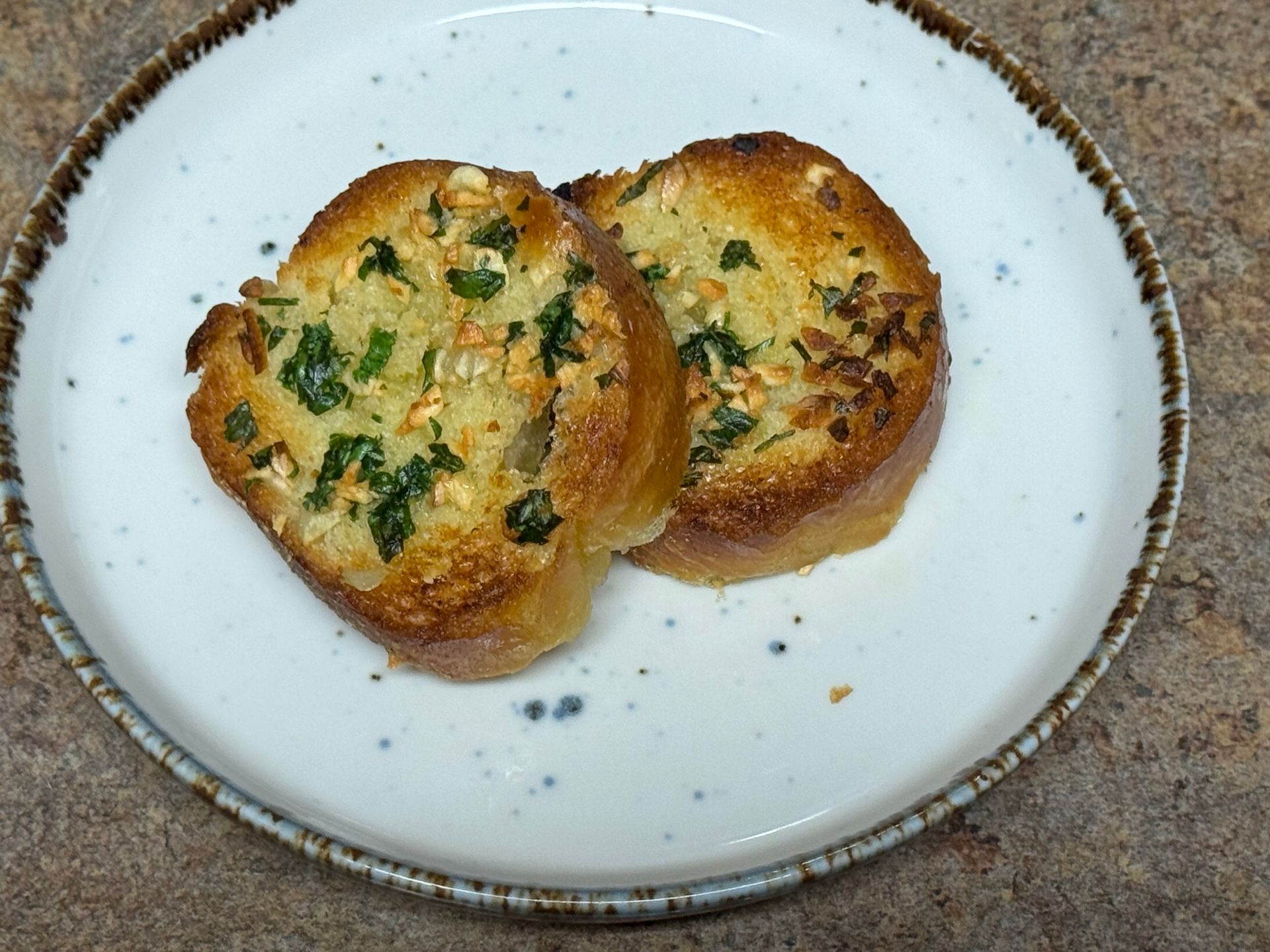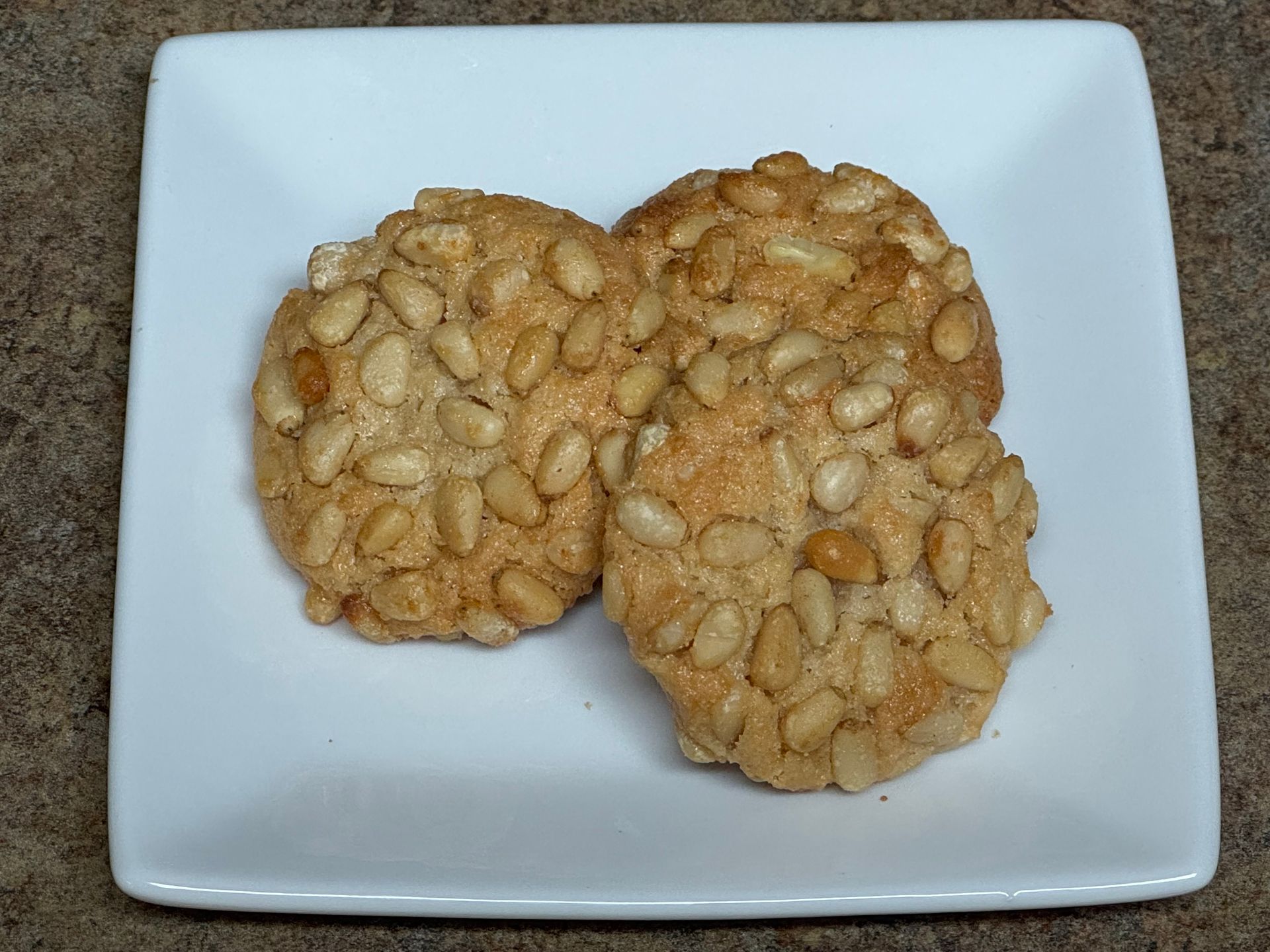
Instructors generally start at the CIA teaching Skills 1 & 2-arguably the most enjoyable & rewarding classes in the curriculum. When you finally get moved to another class you get a sense that you're doing ok... I went to Cuisines of the America's in the CE building and enjoyed researching the history of our great country. That's where I learned about hoppin' John, pot likker, hoe cakes and grits!
Hoppin' John
One of my favorite places to go for amazing food is Charleston. Low country cuisine is filled with interesting history. On my last visit I learned about growing corn, rice, local seafood & fried chicken (maybe bourbon too!)
I visited plenty of great restaurants, toured a few gardens and enjoyed some of the wonderful cuisine of the Gullah people.
It's possible that hoppin' John originated as a recipe created by the Gullah people. The Gullah people are descended from enslaved African people from the rice-growing region of West Africa.
Like many original recipes, over time different people add an ingredient or make a substitution. My recipe is inspired by my many visits down to Charleston, tasting many, many delicious versions. Eating hoppin' John on New Year's Day is considered good luck, usually served with collards in pot likker & sweet corn bread.
Hoppin' John
Prep Time: 2o min
Cooking Time: 18 min
Yield: 4 portions
Ingredients
1/2 Cup Black-eyed peas
1 ea Bouquet garni
Smoked Ham Hock, optional
1 oz. Olive oil
2 Tbsp Bacon, minced
2 Tbsp Celery, minced
2 Tbsp Onion, minced
1 ea Garlic, whole cloves (peeled) minced
1/2 Cup Long grain Rice
t.t. Kosher Salt & Crushed Black pepper
Sachet d' Epices (bay leaf, thyme) not wrapped in cheesecloth
1 1/2 Cups Water, hot
4 Tbsp Herbs, freshly chopped (parsley/ green onions)
How to Prepare Rice
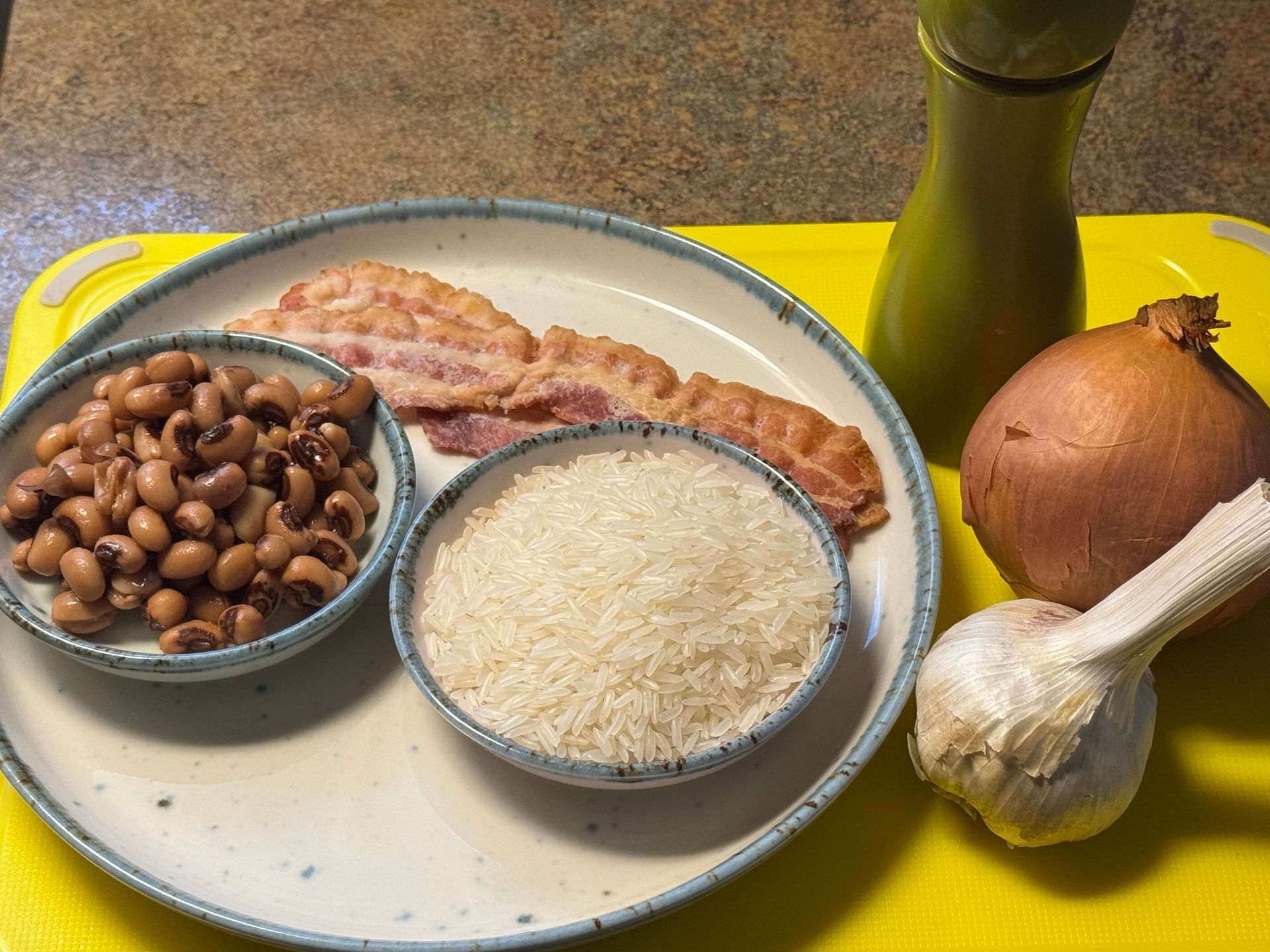
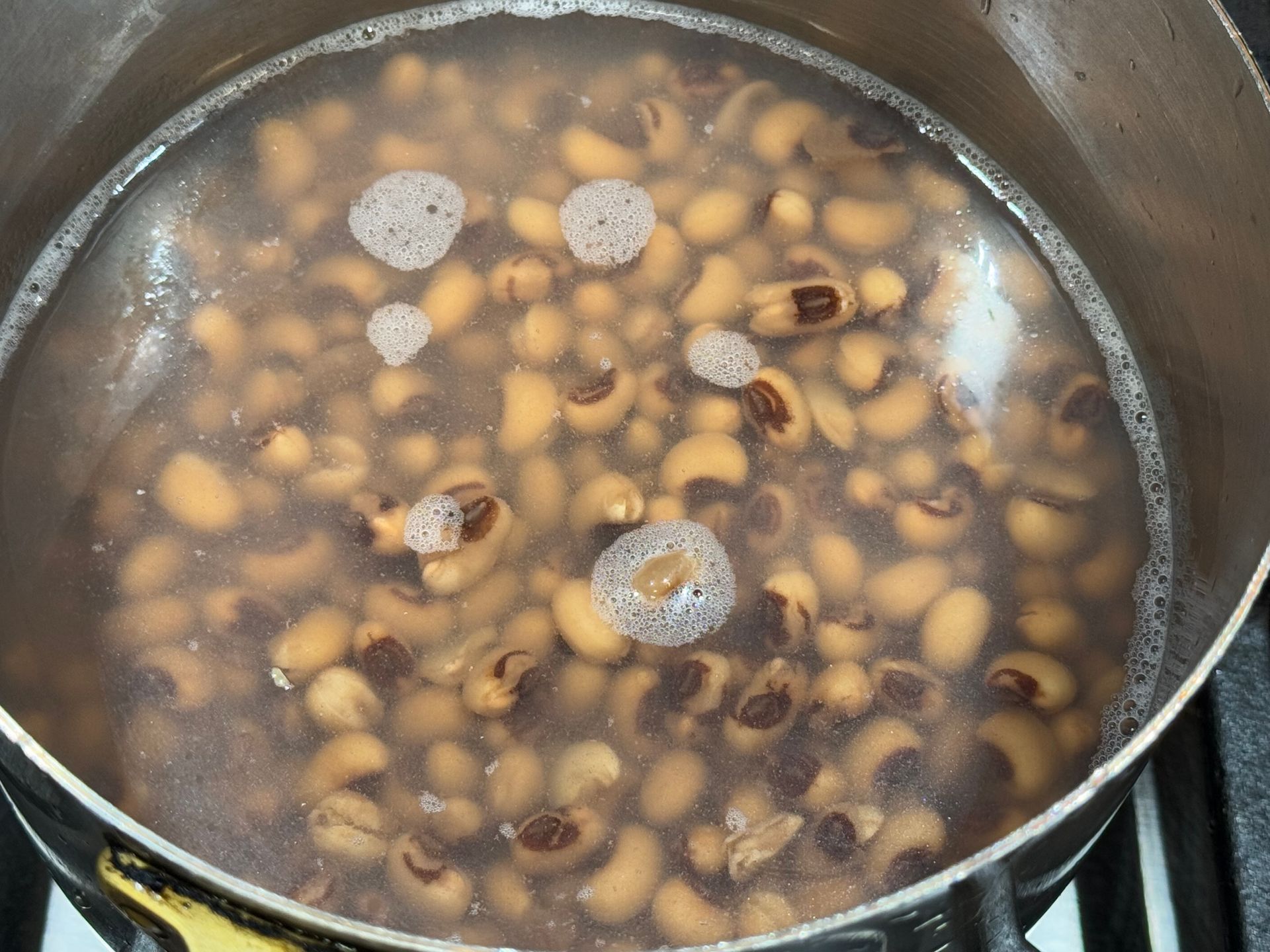
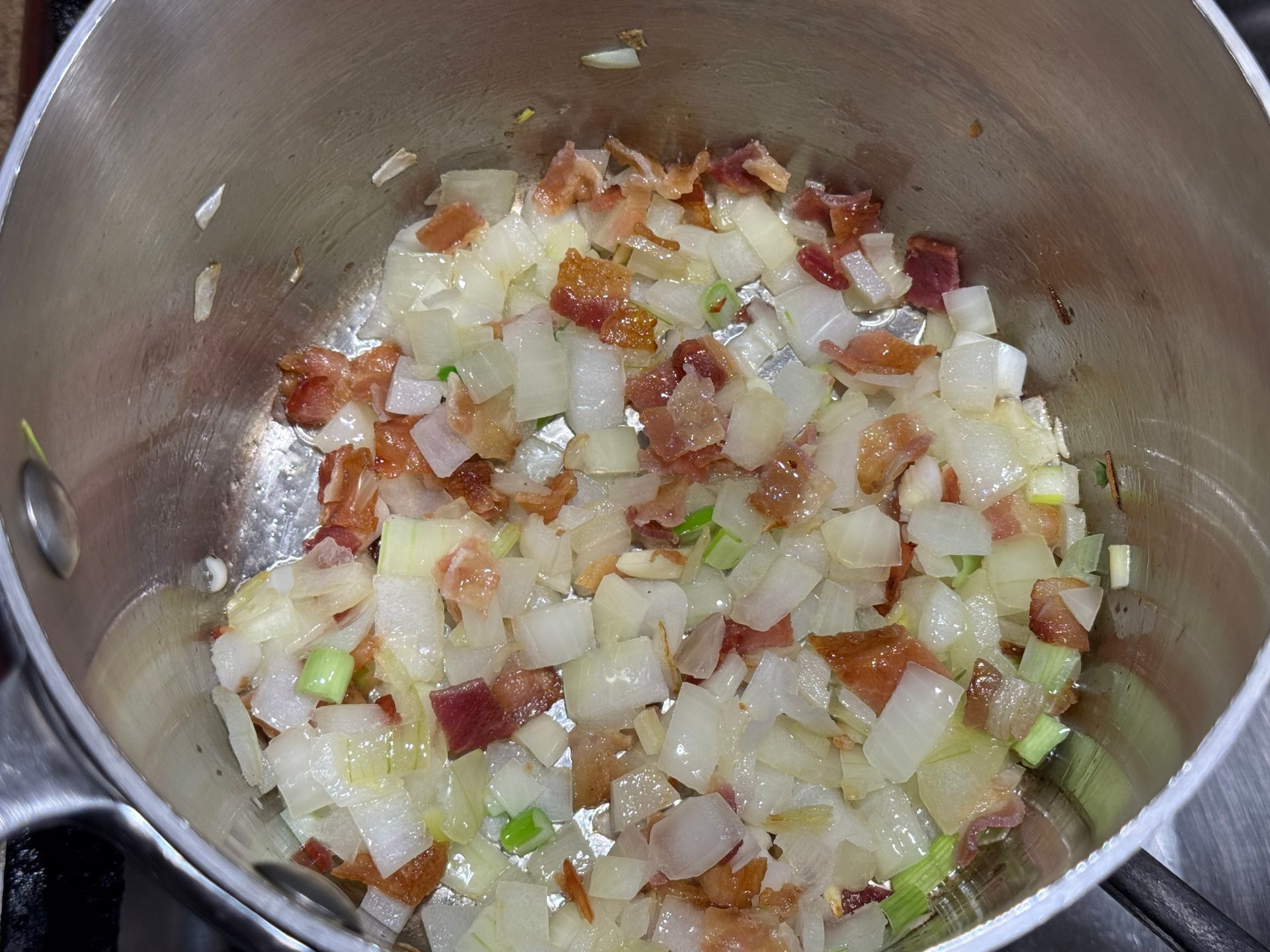
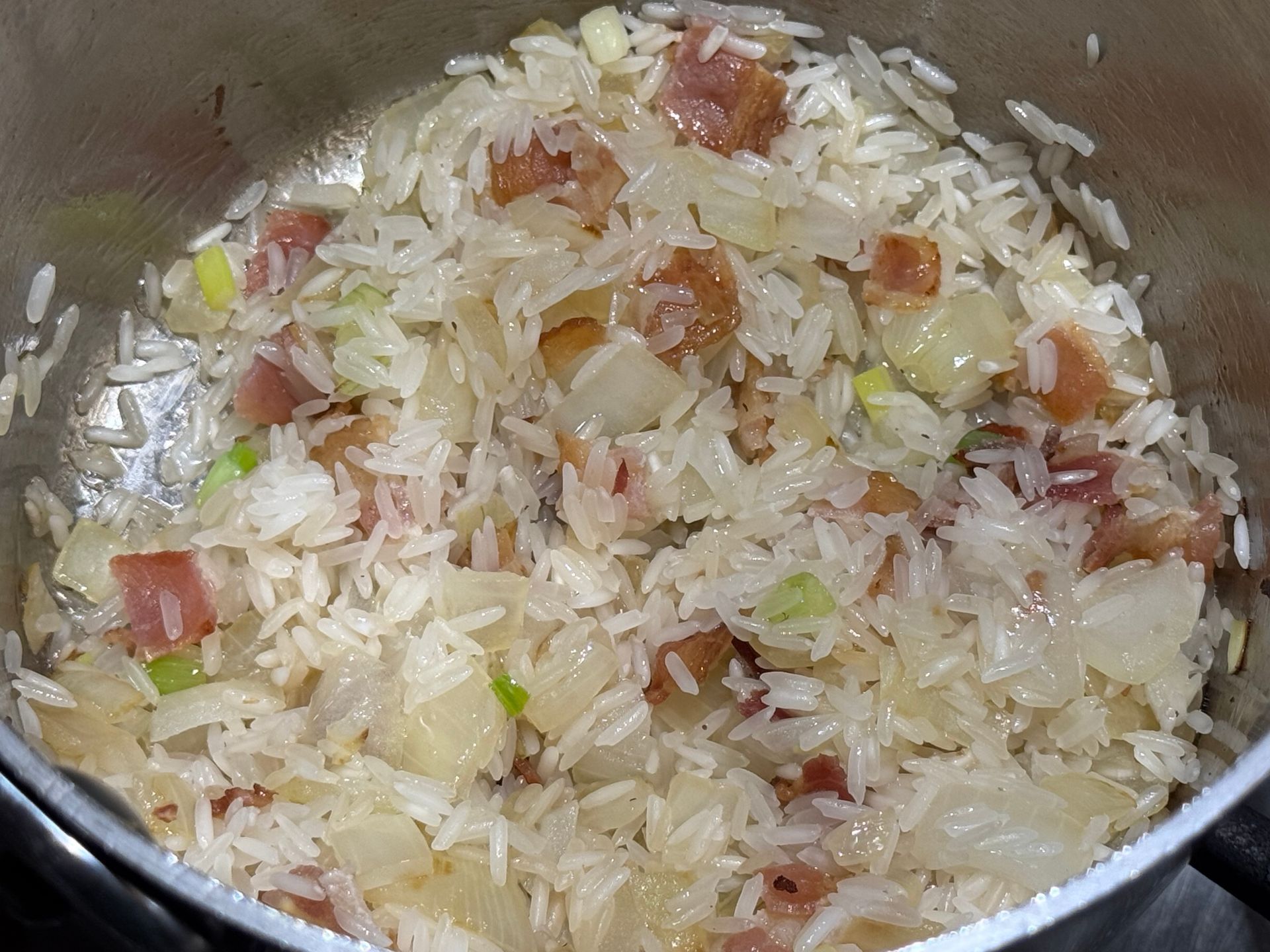
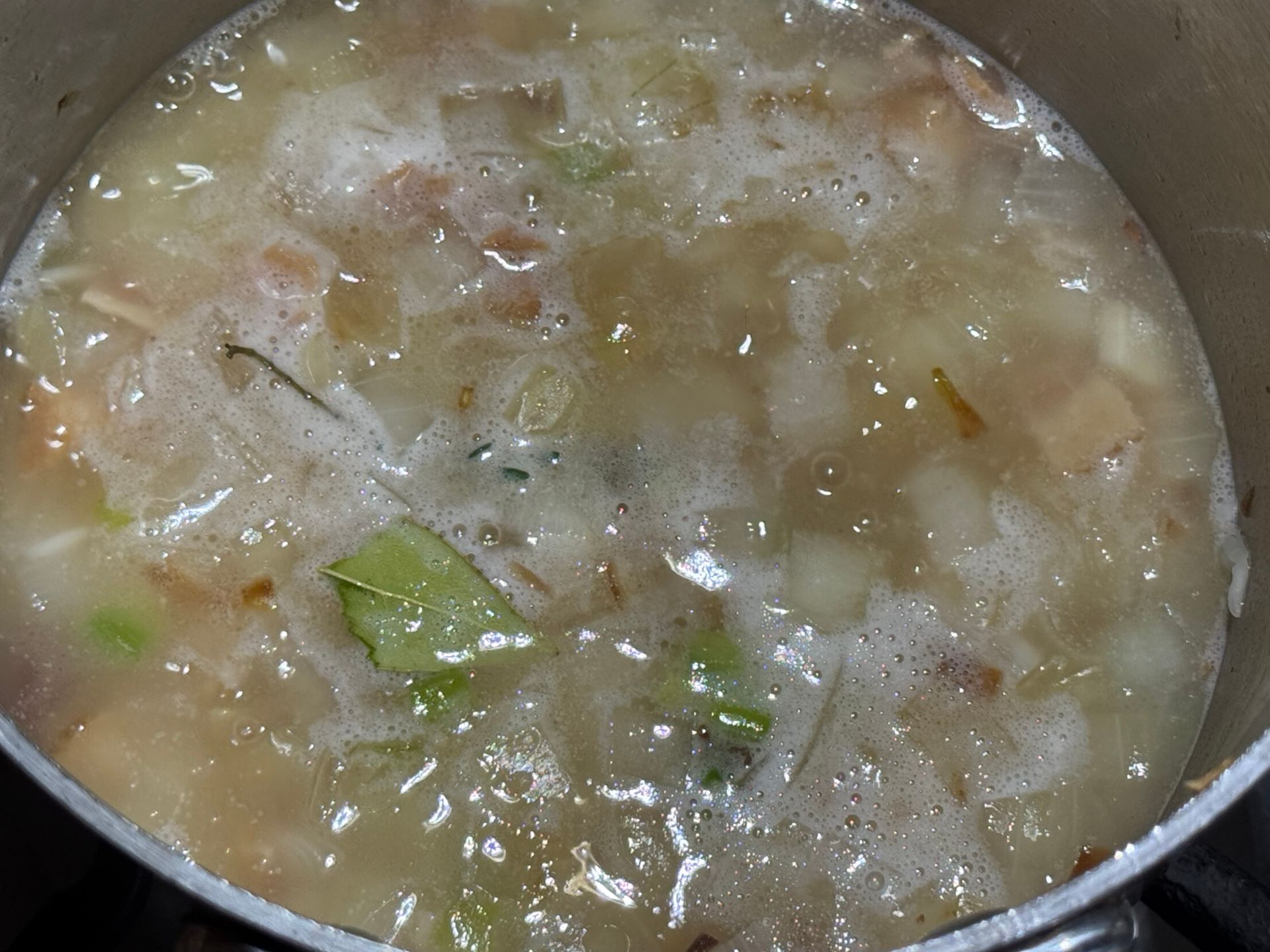
Step 1 Black-eyed Peas
Place the black-eyed peas onto a clean cutting board, pick through any broken pieces, stones etc.. and discard.
Rinse black-eyed peas in cool water, put into a pot of cool water and soak for 2 hours; strain.
Place in a sauce pot, cover with cool water and simmer until tender-about 40-50 minutes. Check for doneness by tasting. Reserve.
Step 1 Rice pilaf
While the black eyed peas are cooking, prepare the rice.
Heat olive oil in a sauce pot, when hot add the bacon, garlic, celery and onions; lightly cook until soft/ translucent.
Step 2
Add the rice and toast it (parch it) to gelatinize the starches and add a little flavor. This will take about 4 minutes, season with salt and pepper.
Step 3
Add the liquid, bay leaf and thyme. Bring to a simmer. Cover and place in the oven at 350° F for 17 minutes to cook. Take the pot out of the oven.
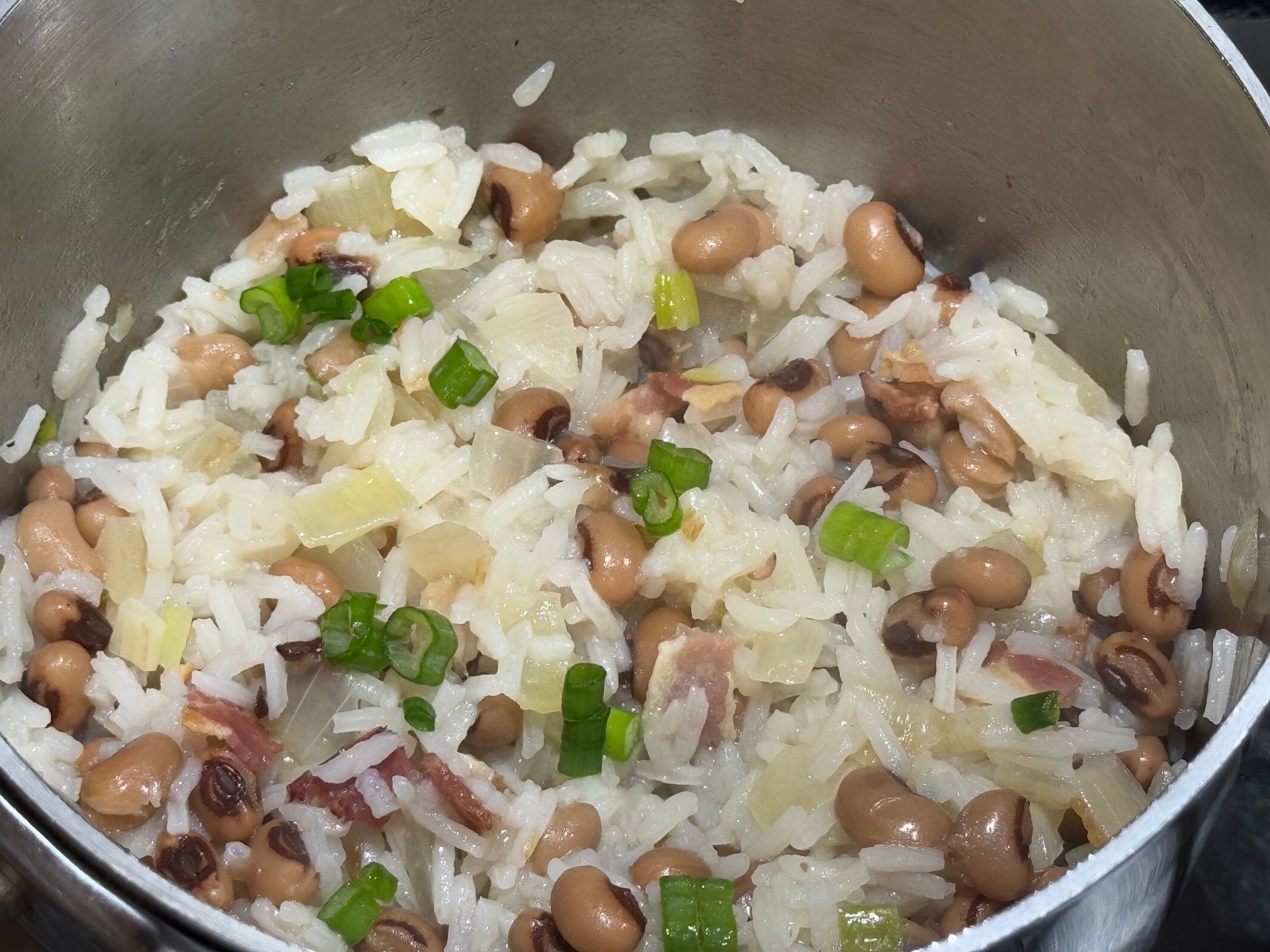
Step 3
Fluff the cooked rice with a fork and fold in the black-eyed peas. You can add chopped parsley or green onions as an option.
Season to taste.
